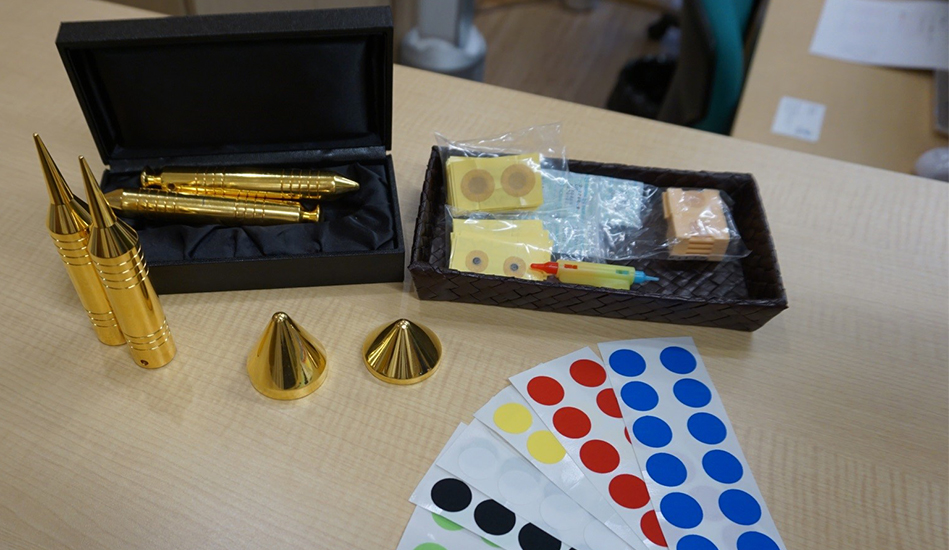Rainbow Therapy – A Modern Take on Acupuncture Treatment
Published: June 19, 2018
Acupuncture (“hari” in Japanese) and moxibustion (“o-kyuu” in Japanese) have been used to treat ailments for over 2,500 years. Now there is a clinic in Koto ward which is bringing a modern approach to this ancient therapy.
Tenmeido, located close to Shin Ohashi bridge and 4 minutes from Morishita Station, opened its doors in February 2018. Run by Mr. Kazuaki and Mrs. Kumiko Nakamura it offers various traditional and modern treatments incorporating hari and o-kyuu, as well as several other types of remedial therapy. Mr. Nakamura is a qualified hari and o-kyuu practitioner, and worked for 10 years at a local clinic before going independent.
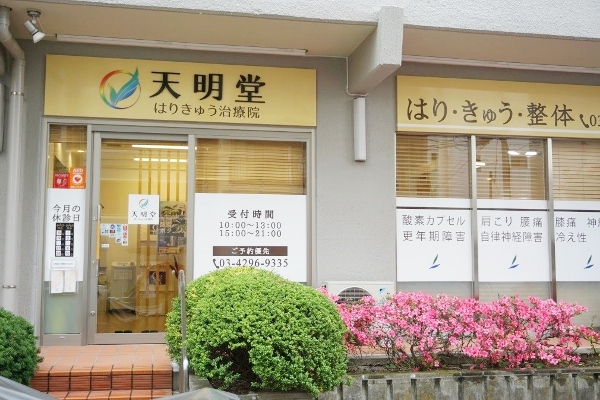
The clinic is conveniently located on the ground floor of an apartment building, and with its colourful rainbow logo, which also adorns the inside walls of the clinic and Mr. and Mrs. Nakamura’s uniforms, is easy to find.
On entering Tenmeido one of the first things I noticed was the fresh, relaxing fragrance wafting through the clinic. The clinic is modern, light and airy, and its customer cubicles are decorated in calming, pastel colours…,
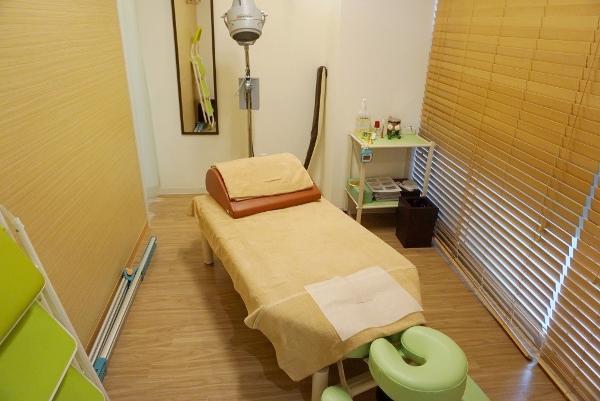
…although Mrs. Nakamura laughingly admitted that they may have overdone it with the plants, which decorate the corridors, walls and counter.

Acknowledging that many people perceive hari to be painful, Mr. Nakamura produced some heavy, metal cylinders with rounded heads and proceeded to demonstrate how these are pressed on the patient’s acupuncture points and lines, but do not pierce the skin (see top photograph). These are effective, particularly for those patients who are frightened of the “needle”.
Another modern take is the use of small round plasters, which are placed on pressure points; on the side touching the skin is a silicone pad with thousands of minute silicone protuberances, which stimulate the skin and help improve blood circulation.
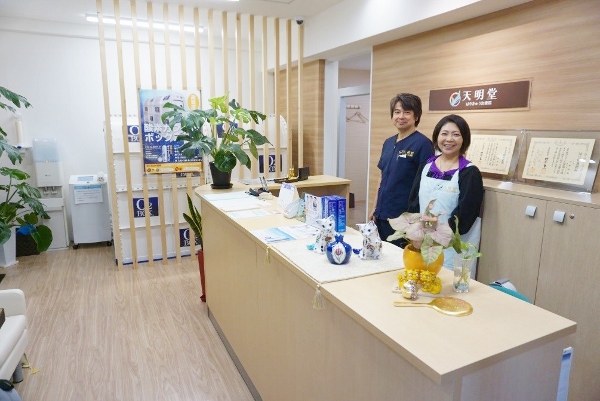
The end wall of the reception area is taken up with an “oxygen room”. This large contraption reminded me of a decompression chamber from an underwater movie, and is apparently not dissimilar. Whilst the patient (or patients – the room can hold 2 people) sits inside the chamber for up to 60 minutes, pressurised oxygen is pumped in, resulting in boosting blood circulation and lowering blood pressure, and is recommended for combatting tiredness and is said to make your skin feel refreshed.
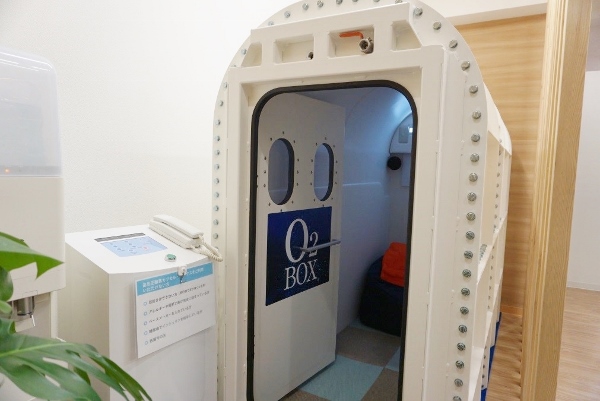
Then there is light therapy treatment (“kousen ryoho” in Japanese). This treatment involves focusing the light generated from passing an electric current across two carbon sticks inside a spotlight-like machine onto the tired feet of the patient. Mr. Nakamura demonstrated the contraption and the heat generated from the light was certainly noticeable, and the whole effect was quite spectacular.
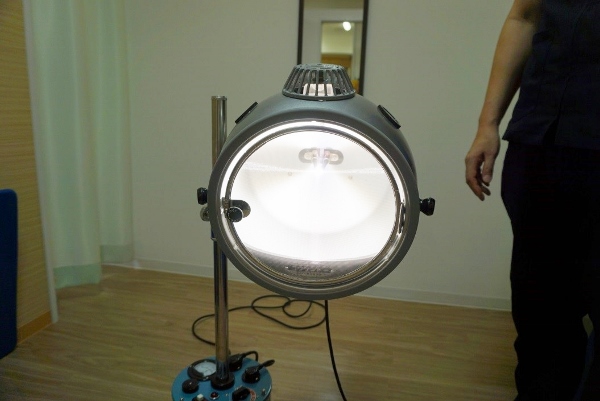
Electricity also plays a part in the clinic’s electric acupuncture (“denki bari” in Japanese) treatment, whereby a pulsing current is passed through two hari for 15 minutes to loosen tight muscles and stimulate blood circulation.
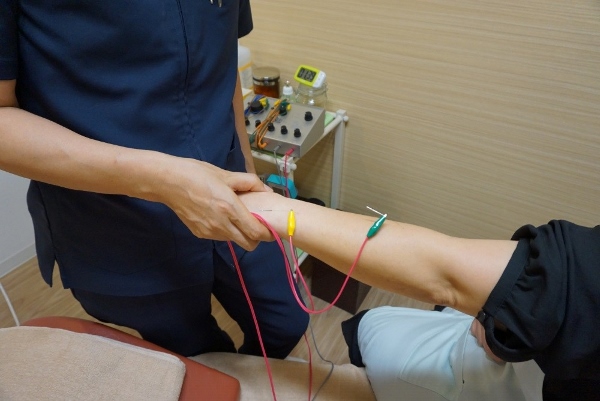
Then it was my turn. For my first ever experience of hari Mr. Nakamura combined this with o-kyuu treatment to relieve my stiff neck. Taking a new 0.16mm hari (all needles are disposed of after use) he swabbed my right lower arm and then slid the hari under my skin, gently tapping it as it went in.
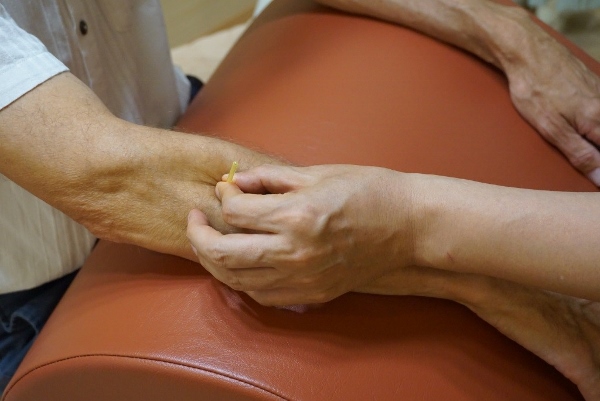
In the past, I have been known to faint at the sight of a needle, but with this process it was unobtrusive and I did not feel anything. Mr. Nakamura then skewered a lump of moxa (dried mugwort) onto the end of the hari and lit it.
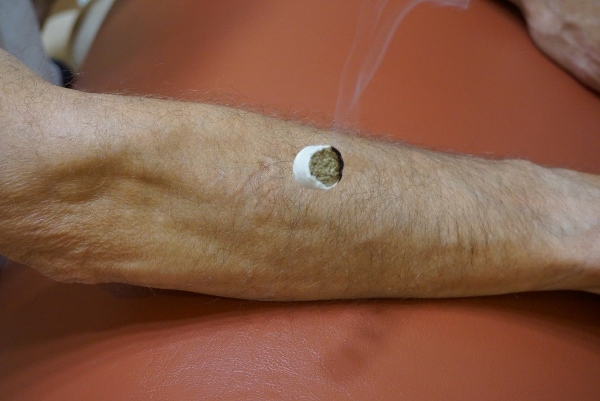
Sitting there, I experienced a sensation of heat on my arm, accompanied by the strong but pleasant smoky smell of the burning moxa. At the end of my relaxing acupuncture and moxibustion “moment” I could certainly move my neck more freely.
Finally, Mr. Nakamura closed the session by introducing me to Core Noodle, which involves neither hari nor o-kyuu. This long orange tube contains sponge cylinders, and is useful for exercising back muscles which need loosening and strengthening, but without requiring hard physical effort.
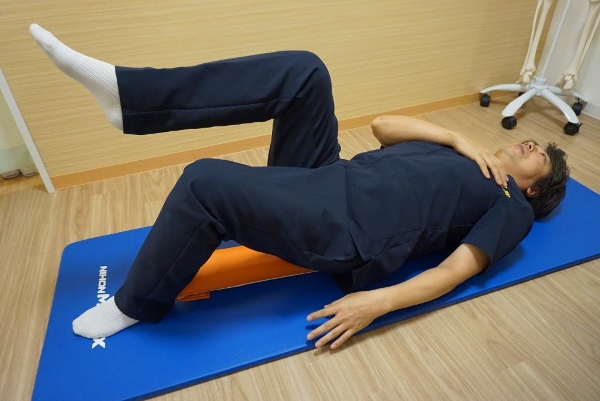
At present the majority of Tenmeido’s clients comprise female office workers, many seeking relief for computer-driven tired eyes and shoulders, and male golfers and runners suffering recreational stresses.
Talking with Mr. Nakamura his ambition is to make people more aware of the benefits of hari and o-kyuu, and their use in preventive care, as part of an overall health management regime, as well as curative therapy. As they say, “Prevention is better than cure”.
So, why not put away that fear of the needle and, like me, try a spot of hari? It’s a painless and fascinating experience, and it seems to work.

Story and Photos by Jeremy Hutchinson

